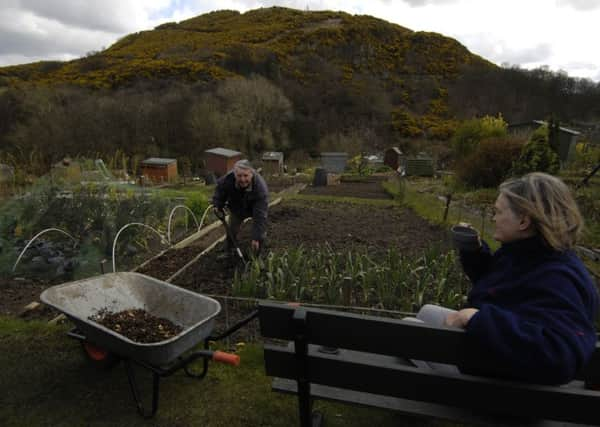Ilona Amos: Community growing schemes are a huge boon


In my more misty-eyed moments I picture myself, ruddy-cheeked from the great outdoors, arriving home to the hungry brood with arms laden full of hearty homegrown veg still sporting clods of the earth it was only minutes ago dug out of – by me.
Unfortunately the bubble bursts when I remember that I don’t have my own garden. Then I consider my track record, which is more botanical Grim Reaper than Barbara Good.
Advertisement
Hide AdAdvertisement
Hide AdBut the good news for more green-fingered readers is that we don’t actually need our own space to put fresh local food on our plates. New figures show an increasing number of Scots who share my dream are enjoying the fruits of their labour thanks to a new enthusiasm for community growing schemes.
Though some local authorities do not offer allotments, they account for the largest proportion of community plantings. But there is a massive shortfall in availability. Recent research shows demand outstrips supply at least twofold, with thousands of people in towns and cities facing waiting lists of nearly a decade.
Although access to land remains a major obstacle, this has not been enough to thwart many of the country’s most determined amateur agriculturalists. There has been a surge in alternative forms of community growing.
According to a new study by the Central Scotland Green Network, more folk than ever are getting down and dirty with their neighbours to share land and turn unused plots into gardens and orchards to cultivate their own organic produce. The survey has revealed a massive rise in the number of community gardens being planted in the central belt, with an increase of nearly 80 per cent in the past five years. Such projects now account for more than a quarter of community growing sites in the region.
The acreage of land being turned into community orchards has also been increasing steadily, expanding by 28 per cent between 2010 and 2015. Just last month, Glasgow launched its first ever large-scale “edible forest” in the east end of the city, with the planting of nearly 70 fruit and nut trees in Alexandra Park. The the 42-hectare park, was originally farmland, but is the main public space for the communities of Dennistoun, Carntyne, Haghill and Riddrie. It is hoped the orchard will help breathe new life into the area and offer both health and social benefits for locals.
The tree varieties being planted in the park have been specially selected to withstand our harsh climate. Once the site is properly established people in the area will be able to enjoy a wide range of produce, including Scottish favourites raspberries, gooseberries and plums. And if all goes well, there will also be some rather more exotic offerings – quince, mulberries or walnuts, anyone? That lot could inject a bit of excitement into my “five a day”.
Community growing is a great concept and we need to see more of it. It comes intertwined with a whole host of positives – especially for urban populations. You’ve got the obvious physical health benefits of upping your intake of fresh fruit and veg. On top of that, research has shown access to the outdoors boosts mental welfare. Then there is an environmental boon, with locally grown fare creating a smaller carbon footprint than its imported equivalent. And you get social and educational rewards, with people getting together to work the land and learning new skills at the same time.
Community schemes such as these are assets on so many fronts. Surely most of us secretly dream of the Good Life.